Honorary Degree Recipients + Convocation Speakers


Honour with Purpose
Do you know of someone extraordinary? Nominate them for a U of A Honorary Degree today!
Learn MoreHonour with Purpose
Do you know of someone extraordinary? Nominate them for a U of A Honorary Degree today!
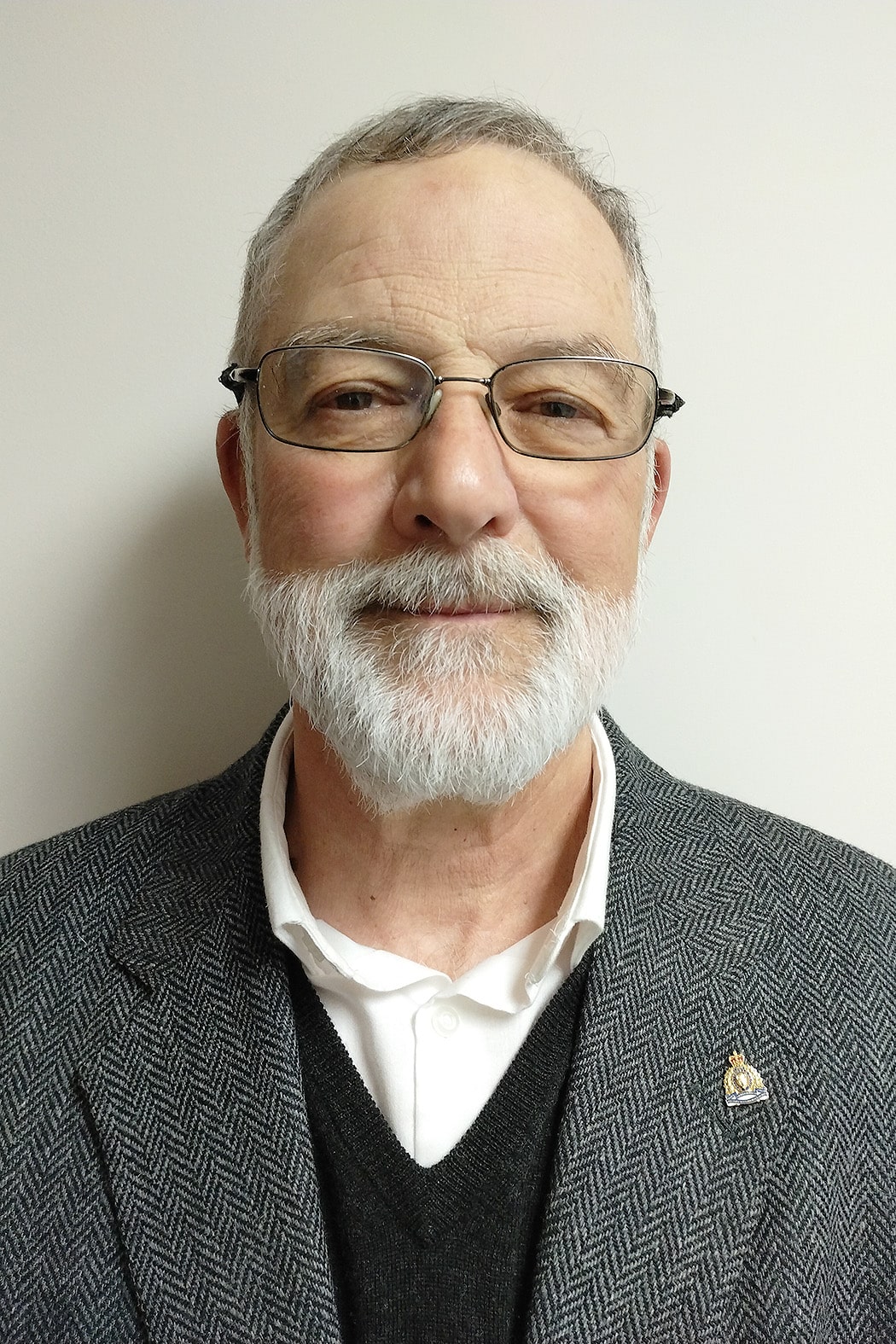
Mr. Richard Smith
Sunday, June 2, 2:30 p.m.
Richard Smith was born in London, England to a Turkish Cypriot father and an Irish mother. He spent his early years growing up in England, travelling extensively as part of a Navy family. At just eight years old, his family emigrated to Canada for a new life and a wider range of opportunities, settling in Calgary.
From an early time, Richard felt a desire to give back to his community, his province and his country. He began his life in service by joining the Royal Canadian Army Cadet Corp in 1966. Service in the Cadets led to a military career with the Royal Canadian Army for five and a half years. After leaving the military, Richard attended the University of Manitoba and the University of Winnipeg until 1977, when a direct-entry program provided the opportunity for university students to enter the Royal Canadian Mounted Police (RCMP).
Richard joined the RCMP, serving in four provinces over a 21-year career with the force. From there, he worked in Public Safety and Emergency Management with the municipal government in west central Alberta, and later with Alberta’s Justice and Solicitor General.
Since 1977, Richard has taken a keen interest in Search and Rescue (SAR) through employment and as a volunteer for SAR organizations since 1986. He has shared his knowledge in the subject area by co-authoring five SAR training books and developing associated course materials that are used across Canada, the U.S.A. and in Europe. He teaches both nationally and internationally; has been called as an expert witness and a subject matter expert for public enquiries across Canada; and has received multiple awards attesting to his service in the field, including the Governor General’s Sovereign’s Medal for Volunteers.
In 1997, Richard assisted the Psychology Department at the U of A in a research and development project, leading to SAR teams becoming more efficient and effective, and better equipped to locate lost and missing persons faster.
In his leisure time, Richard raises, trains and runs Siberian Husky sled dogs from his kennel located in Alberta’s foothills. By dogsled, he has retraced historic Hudson Bay Company and North West Mounted Police patrol routes, and participated in Dog Sled Mail Runs.
University of Alberta Senate Donation
The University of Alberta Senate is donating the following volume to the Bruce Peel Special Collections Library to commemorate the awarding of an honorary degree to Mr. Richard Smith:
- Sherard Osborne and George F. McDougall, editors. Facsimile of the Illustrated Arctic News, Published on Board H.M.S. Resolute: Captn. Horatio T. Austin, C.B. in Search of the Expedition under Sir John Franklin. London: Ackermann & Co., 1852.
A monumental search and rescue operation ensued when Sir John Franklin (1786–1847) and the crew aboard his ships, HMS Erebus and HMS Terror, disappeared while on an expedition to chart the elusive Northwest Passage. Among the earliest expeditions that set out to rescue Franklin was a four-ship squadron commanded by Sir Horatio Thomas Austin (1801–1865) that began a search of the Eastern Arctic in 1850. Austin was at the helm of HMS Resolute, and to boost the morale of his crew, The Illustrated Arctic News was produced shipboard as a handwritten newspaper in five issues from October 1850 to March 1851. In imitation of The Illustrated London News, it included illustrations in each issue as well as letters, news, playbills, songs, and stories. When the expedition returned to England, The Illustrated Arctic News was republished for a wider audience as a facsimile edition in 1852. This first edition copy was expertly restored by bookbinder Alexander J. McGuckin; it features a title page with a hand-coloured vignette, numerous illustrations (many in colour), lithographed text in double columns, and a dark blue binding with an arctic scene stamped in gilt on the cover. It also contains a loose sheet laid in with an inscription: “To Jacob & Henriette Oliver, from their brother, Fredk. J. Krabbé with best love, and wishes for their continued happiness. April 1852." During Captain Austin’s multi-vessel search for Franklin, Frederick John Krabbé (1824–1869) served as Second Master on board HMS Assistance.
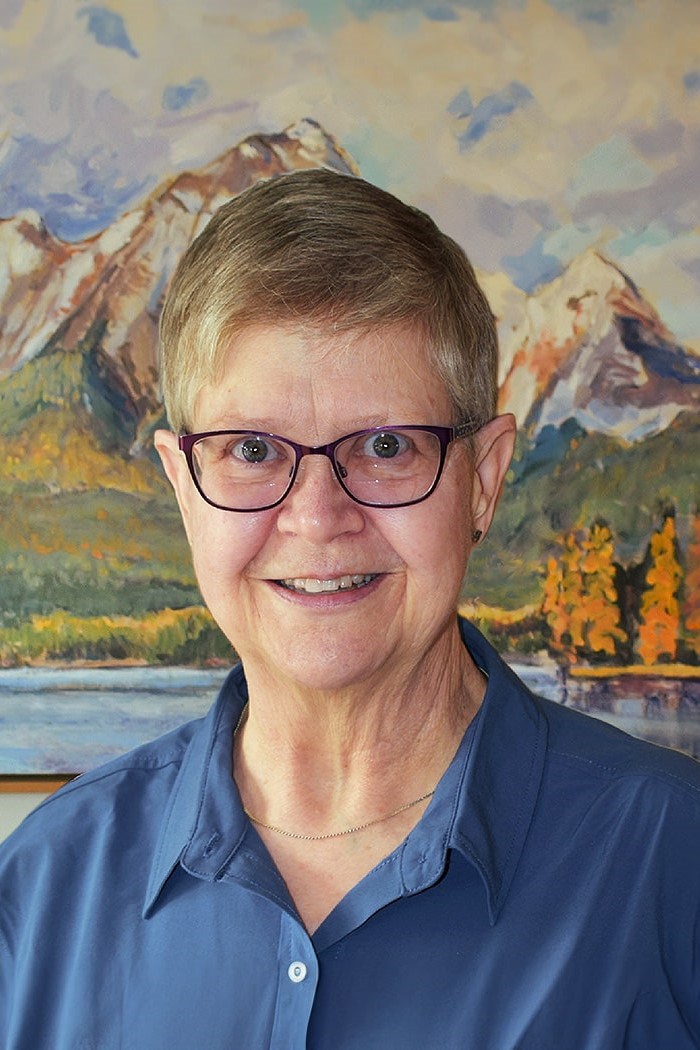
Dr. Connie Varnhagen
Wednesday, June 12, 3 p.m.
Connie Varnhagen, Professor Emerita at the University of Alberta and President of Alberta Helping Animals Society (AHAS), is celebrated for her leadership in teaching, research and community service. She played a crucial role in establishing and teaching in the Science 100 program in the Faculty of Science, as well as the Companion and Performance Animals degree program in the Faculty of Agricultural, Life & Environmental Sciences. As a Faculty Associate for University Teaching Services and a 3M National Teaching Fellow, she actively supported a range of innovative teaching and learning initiatives. Connie’s research, supported by Canada’s three national funding agencies, focuses on applied developmental science and social issues, including children’s literacy development, assessing information on the web, youth attitudes towards risky behaviours and the impact of the human-animal bond on health and wellbeing. Much of her community-based research involves undergraduate students, leading to her role as the founding Academic Director of the Undergraduate Research Initiative.
Connie’s recent work with undergraduate students contributed to developing models for the Edmonton Humane Society’s Prevent Another Litter Subsidy and the AHAS. AHAS is a volunteer-based charity offering advice, advocacy and no cost veterinary services to low-income Edmontonians.
Several of Connie's former students, now practicing veterinarians or technologists, generously volunteer with AHAS Home Veterinary Services. Connie herself obtained a distance education veterinary technology degree at San Juan College with the aim of contributing to AHAS as well as other initiatives extending veterinary care to underserved people around the world. Connie's commitment to community service and ongoing undergraduate research on the human-animal bond has established AHAS Home Veterinary Services as a leader in community-based, accessible veterinary care.
University of Alberta Senate Donation
The University of Alberta Senate is donating the following volume to the Bruce Peel Special Collections Library to commemorate the awarding of an honorary degree to Dr. Connie Varnhagen:
- Anna Sewell. Black Beauty, His Groom and Companions. Boston: American Humane Society, 1890.
First published in London, this is the first American edition of one of the best-selling books of all time. The central character, Black Beauty, is a horse who narrates his own life story beginning with his early happy life on a farm with his mother through his working life, pulling a cab in London for increasingly cruel owners, and on to his happy retirement. Always intelligent and virtuous, this is a horse who has been loved by generations of readers of all ages and in a great many languages. Black Beauty is the most famous in the series of books published by the American Humane Society in its early years in order to teach readers that animals are sentient beings who should be treated in a compassionate manner, something that was not widely understood at the time. Black Beauty is an important addition to Bruce Peel Special Collections, both for its own sake and because it was the inspiration for another extremely popular Humane Society publication, one that was also the first novel by a Canadian author to sell over a million copies: Beautiful Joe (1894).

Dr. Charles Lee
Thursday, June 13, 10 a.m.
Convocation speaker: Thursday, June 13, 3 p.m.
Charles Lee grew up in High Prairie, Alberta and moved to Edmonton in 1983. He pursued his undergraduate studies in the Department of Genetics at the University of Alberta and subsequently obtained his graduate education in the Faculty of Medicine, also at the University of Alberta. He conducted his postdoctoral studies at Cambridge University and Harvard Medical School and then joined the faculty at Harvard Medical School. It was during this time that Professor Lee discovered, for the first time, that genes (once thought to always occur in two copies per cell), can be present in more or fewer copies, or be missing altogether. This phenomenon of genome-wide copy number variation was a groundbreaking discovery that changed the field of human genetics and transformed our understanding of disease mechanisms, human evolution and the development of new genetic diagnostic tests.
In 2013, Professor Lee became the inaugural Scientific Director of The Jackson Laboratory (JAX) for Genomic Medicine, creating a new human genomics-centered campus for JAX, a nonprofit biomedical research institute which leverages the mouse as a model organism to advance precision medicine. He also serves as Professor and Robert Alvine Family Endowed Chair at JAX for Genomic Medicine.
During the COVID-19 pandemic, he was appointed to the task force that advised Connecticut Governor Lamont on navigating the public health emergency, and he led the coordination of one of the most efficient SARS-CoV-2 testing programs in the United States.
For his discoveries in the human genome, Professor Lee has received many accolades including from the American Association for Cancer Research, the American Association for the Advancement of Science, Thompson Reuters, Duke University and others. In 2008, he received the Ho-Am Prize in Medicine, and in 2018, he received the Distinguished Alumni Award from the University of Alberta. Professor Lee is a past president of the Human Genome Organization and in 2023, he was inducted as a Fellow of the Korean Academy of Science and Technology.
University of Alberta Senate Donation
The University of Alberta Senate is donating the following volume to the Bruce Peel Special Collections Library to commemorate the awarding of an honorary degree to Dr. Charles Lee:
- Flamand. The Art of Preserving and Restoring Health. London: R. Bentley, H. Bonwick, and S. Manship, 1697.
The title page of this early treatise on “simple and effectual remedies” for various diseases explains that it was “Written in French by M. Flamand, M.D. and faithfully translated into English.” The book is divided into two sections: part one explores the art of preserving health, from removing “the First immediate Cause of Diseases, by lessening the Quantity of the Blood” (30) to using “purging medicines” that are “proportioned to the Strength of the Patient” (51); part two focuses on “particular remedies” that the author “had observ’d to be most esteem’d, and found to be most useful and effectual” (72), from “A Remedy for the Head-Ach” (82) to a treatment “For the Spleen” (88). The remedy for “the Pain of the Kidneys” was certainly straightforward but to modern readers, predictably ineffectual: “Dip a Linen Cloth in Oxycrate, and apply it to the Part affected. Oxycrate is a Mixture of six parts of Water, and one of Vinegar” (92). This copy of an exceedingly scarce antiquarian medical book has a contemporary calf binding and an early ownership inscription on the title page.
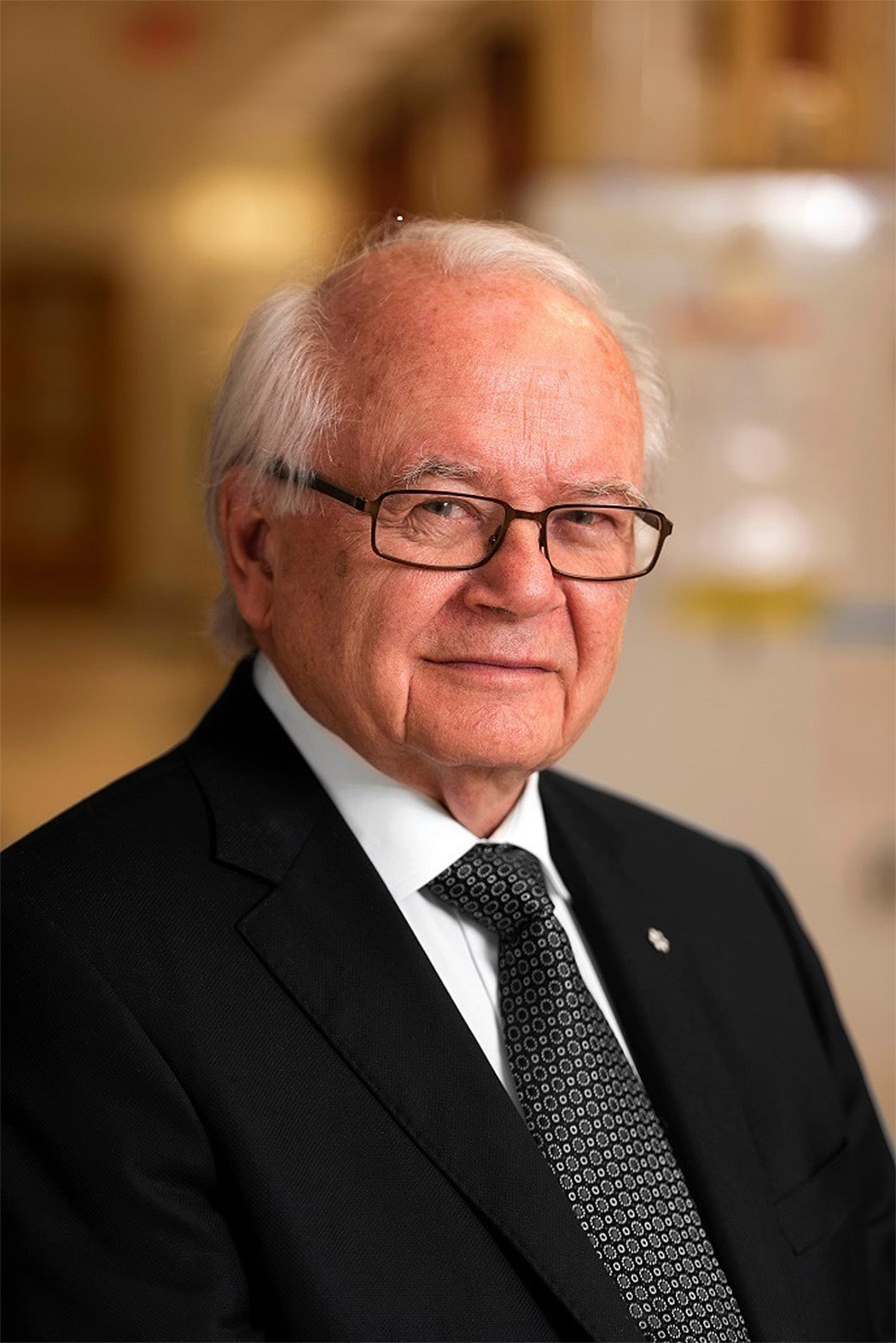
Dr. D. Lorne Tyrrell
Friday, June 14, 3 p.m.
Dr. Tyrrell obtained a BSc (UofA) in 1964, MD in 1968 (UoA) and a PhD in 1972 (Queen’s University). After training in Internal Medicine and Infectious Diseases, he completed a PDF in Virology (Karolinska Institute) in Stockholm.
Dr. Tyrrell is a Distinguished Professor at the University of Alberta and a Fellow of the Royal Society of Canada. He is Founding Director of the Li Ka Shing Institute of Virology, Associate Director of the Applied Virology Institute with Sir Michael Houghton (Nobel Prize Laureate 2022) as Director. He is Co-Director with Dr. Matthias Gotte of SPP-ARC (Striving for Pandemic Preparedness – the Alberta Research Consortium).
Dr. Tyrrell has been actively engaged in virology research for over 40 years focusing on viral hepatitis. Research with Dr. Morris Robins (Chemistry, University of Alberta) led to the first oral antiviral therapy for the treatment of chronic hepatitis B. Work with Drs. N. Kneteman and D. Mercer led to the first non-primate animal model for hepatitis C virus (HCV). This resulted in a spin-off company, KMT Hepatech, which held an exclusive contract with the National Institutes for Health (NIH) for over 15 years to test antivirals for HCV.
Since the outbreak of COVID-19, his research has expanded into vaccines, therapeutics and diagnostics for SARS-CoV-2. Dr. Tyrrell was the Dean of Medicine and Dentistry (1994-2004), Chair of the Gairdner Foundation Board (2008-2019) and a member of the Research Advisory Committee to the President of Canadian Institute for Advanced Research (2004-2019). In 2020, he was appointed a member of the COVID-19 Vaccine Task Force for the Federal Government. Dr. Tyrrell’s accolades include Officer of the Order of Canada, Alberta Order of Excellence, Canadian Medical Hall of Fame and Killam Prize in Health Research. He was awarded the Henry G. Friesen International Prize in Health Research (2021) and the Baruch S. Blumberg Prize (2022) by the Hepatitis B Foundation of America.
University of Alberta Senate Donation
The University of Alberta Senate is donating the following volume to the Bruce Peel Special Collections Library to commemorate the awarding of an honorary degree to Dr. D. Lorne Tyrrell:
- Flamand. Minta Collins. Tractatus de Herbis. London: Folio Society, 2002.
Within the holdings of The British Library is a lavish medieval manuscript about plants and their medicinal properties, Tractatus de Herbis, which is otherwise known as British Library Egerton MS 747 (named after Francis Henry Egerton, 8th Earl of Bridgewater (1756–1829) who established a fund for manuscript acquisitions). This facsimile of the manuscript was published in a limited edition with an accompanying commentary volume, featuring an introduction by Minta Collins and a list of plants by Sandra Raphael. The manuscript has ruled columns, alphabetical sections, an extensive handwritten text, decorative chapter initials, and hundreds of plant illustrations. Bound in dark green goatskin with a design of brambles on the cover by David Eccles, the facsimile has 109 folios, gilt edges, and handmade endpapers; the separate commentary volume is bound in quarter buckram with a printed label on the cover. Both volumes are elegantly housed in a dark green Solander case with a pastedown spine label.

Dr. Robert Foster
Monday, June 17, 3 p.m.
Dr. Foster has an accomplished history of leadership success in the global life sciences. In a career spanning over 35 years, which includes senior positions in both industry and academia, he has achieved results ranging from discovering and leading the clinical development of a U.S. Food and Drug Administration (“FDA”)-approved drug and structuring one of Canada’s largest-ever drug licensing deals to publishing over 225 papers, abstracts and book chapters focused on drug analysis, development and pharmacometrics and being named as an inventor on approximately 205 patents.
Most recently, he was the Chief Executive Officer of Hepion Pharmaceuticals, a NASDAQ-listed, clinical-stage biopharmaceutical company. Hepion’s lead drug, rencofilstat, is a potent inhibitor of cyclophilins that is in development for the treatment of metabolic dysfunction-associated steatohepatitis (MASH), fibrotic diseases, hepatocellular carcinoma (HCC) and other chronic diseases. Previously, Dr. Foster and his team discovered rencofilstat while at Ciclofilin Pharmaceuticals, which merged with Hepion in 2016. Before that, he founded and led TSX-listed Isotechnika Pharma (now Aurinia Pharmaceuticals; NASDAQ:AUPH), where he discovered voclosporin, a novel cyclophilin inhibitor designed to treat autoimmune diseases. In 2002, Dr. Foster structured a US$215 million licensing deal, Canada’s largest at the time, for voclosporin for kidney transplant immunosuppression with Hoffman-La Roche. Voclosporin (LupkynisTM) was later developed for the treatment of lupus nephritis and approved by the FDA for that indication in January 2021. In addition to his many achievements related to drug discovery and development, Dr. Foster is also the innovator of a commercially available 13C urea breath test, called Helikit, for the diagnosis of peptic ulcers caused by H. pylori.
Dr. Foster has, and continues to be, a proud member of Alberta’s academic community. He is an Adjunct Professor, Faculty of Pharmacy and Pharmaceutical Sciences, University of Alberta. He previously served as:
- Board member of Transcriptome Sciences
- Board member of the Alberta Economic Development Authority
- Council member, Alberta Premier’s Advisory Council on Health
- Advisory Board member, Industry Liaison Office, University of Alberta
- Co-Chair and Board member of BioAlberta
- Member of the Board of Management, Alberta Science and Research Authority.
Dr. Foster holds a BSc (chemistry), BSc (Pharm), PharmD, and PhD (Pharmaceutical Sciences), and served as a tenured, Associate Professor in the Faculty of Pharmacy and Pharmaceutical Sciences at the University of Alberta until 1997, when he left the university to pursue his entrepreneurial and executive management endeavors in industry. From 1990 to 1994, he also held the position of Medical Staff, Scientific and Research Associate in the Department of Laboratory Medicine at the Walter C. Mackenzie Health Sciences Centre.
University of Alberta Senate Donation
The University of Alberta Senate is donating the following volume to the Bruce Peel Special Collections Library to commemorate the awarding of an honorary degree to Dr. Robert Foster:
- Joseph Miller. Botanicum Officinale; or a Compendious Herbal: Giving An Account of All Such Plants as Are Now Used in the Practice of Physick. With Their Descriptions and Virtues. London: E. Bell, J. Senex, W. Taylor, and J. Osborn, 1722.
This rare book on herbal medicine was published for the benefit of early apothecaries who sought knowledge of plants as medicines in the treatment of various ailments and diseases. Arranged alphabetically by their Latin names, each plant also has affiliated names and a description in English. The final entry for “Zinziber” describes how “Ginger” could be used for medicinal purposes: “This is a yellowish, white, and flattish round Root, somewhat knotty and branched, of an aromatic Smell, and a very hot biting Taste … Ginger is used in Food, as well as in Physick. It heats and comforts the Stomach, expels Wind, helps Digestion, prevents the Collic, and strengthens the Bowels” (463). This first edition copy of Joseph Miller’s herbal (a book comprised of names and descriptions of plants) has a contemporary full calf binding, marbled endpapers and edges, and an engraved armorial bookplate of Hugh Cecil Lowther, 5th Earl of Lonsdale (1857–1944).
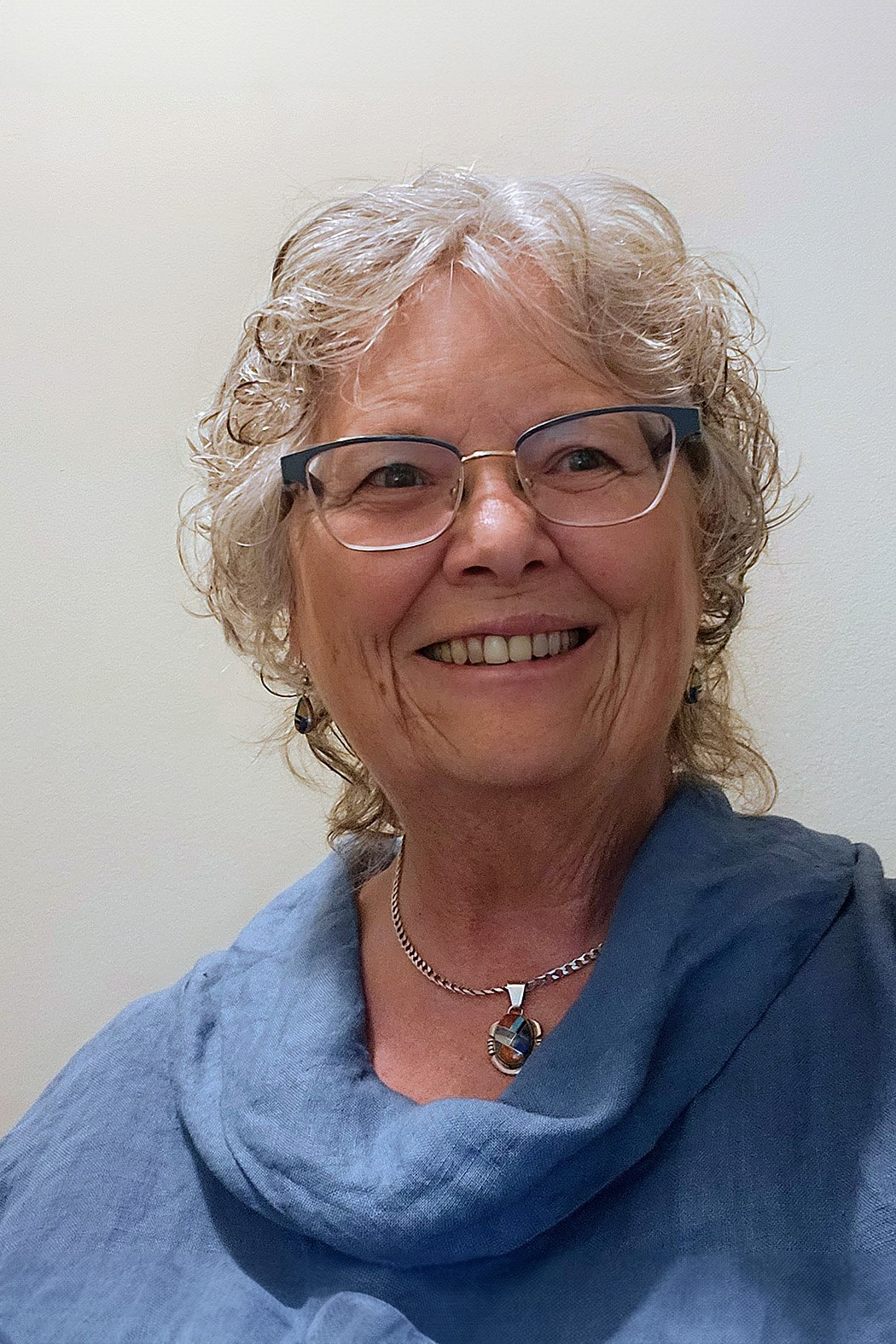
Professor Catherine Bell
Tuesday, June 18, 10 a.m.
Convocation speaker: Tuesday, June 18, 3 p.m.
Catherine Bell is an Emerita Professor of Law at the University of Alberta (1989 – 2021). She has also been a visitor at other universities, most recently with the University of Victoria’s Faculty of Law (2022) and as the Ariel F. Sallows Chair in Human Rights at the College of Law, University of Saskatchewan (2022-2023). As a legal scholar, advocate and educator, she is dedicated to advancing Indigenous rights, access to justice and legal education. Her work has had a significant impact on Indigenous heritage law, policy and practice, Métis rights and collaborative research methods. Her innovative community-engaged research and courses challenge Canadian law to recognize and respect Indigenous rights, knowledge and methods and respond to issues in access to justice.
At the University of Alberta, she developed and taught courses on Indigenous rights, dispute resolution and property law; supported the establishment and supervised in the Kawaskimhon National Aboriginal Law Moot; and created research opportunities for students from diverse disciplines. She also co-developed the Law Faculty’s Low Income Clinical Law Program (with the Edmonton Community Legal Centre & Legal Aid Alberta) and the Externship Program on Gladue Sentencing Principles (with Alberta Justice and Solicitor General). She has taught and developed courses for the Program of Legal Studies for Native People (University of Saskatchewan), Akitsiraq Law School (University of Victoria & Nunavut Arctic College), Nunavut Law Program (University of Saskatchewan & Nunavut Artic College), and Banff Centre Indigenous Leadership Program. In 2012, she was awarded the Ramon John Hnatyshyn Governor General’s Gold Medal recognizing her outstanding contributions to law and legal education.
Among her other contributions is service on committees of universities, Alberta courts and others dedicated to research, access to justice and post-secondary education. Her current work focuses on the United Nations Declaration on the Rights of Indigenous Peoples, museums, repatriation and reform of provincial heritage law and policy. She is also on the Board of the Indigenous Heritage Circle – a national Indigenous designed and led organization dedicated to the advancement of cultural heritage priorities of Inuit, First Nations, Métis peoples and respect for Indigenous laws, values, and protocols.
University of Alberta Senate Donation
The University of Alberta Senate is donating the following volume to the Bruce Peel Special Collections Library to commemorate the awarding of an honorary degree to Professor Catherine Bell:
- Nancy Desjarlais. Sky Woman’s Blanket. Acrylic on canvas. 76.2 x 60.1 cm.
Nancy Desjarlais is an award-winning artist of Cree and Métis ancestry. She spent her early years on the Fort McMurray 468 First Nation, but, like many First Nations children, she was removed from her home and was first put into a convent and later into foster homes. Later, as she reconnected with her family roots, she learned about her culture through art. In Desjarlais’ artwork, images of the sky and stars reveal a cosmic-earth connection that is rich in spiritual energy, “I want to go beyond separateness. We are part of the earth and the universe. There is so much more than can be revealed through our senses. This is what compels and intrigues me.” Sky Woman’s Blanket is a beautifully vibrant celebration of the creation story.

Dr. Donna Strickland
Thursday, June 20, 10 a.m.
Convocation speaker: Thursday, June 20, 3 p.m.
Donna Strickland is a professor in the Department of Physics and Astronomy at the University of Waterloo and is one of the recipients of the Nobel Prize in Physics 2018 for developing chirped pulse amplification with Gérard Mourou, her PhD supervisor at the time. They published this Nobel-winning research in 1985 when Strickland was a PhD student at the University of Rochester in New York state. Together they paved the way toward the most intense laser pulses ever created.
Strickland was a research associate at the National Research Council Canada,
a physicist at Lawrence Livermore National Laboratory and a member of technical staff at Princeton University. In 1997, she joined the University of Waterloo, where her ultrafast laser group develops high-intensity laser systems for nonlinear optics investigations.
Strickland was named a Companion of the Order of Canada. She is a recipient of a Sloan Research Fellowship, a Premier’s Research Excellence Award and a Cottrell Scholar Award. Strickland served as the president of the Optical Society (OSA) in 2013. She is a fellow of OSA and SPIE, the Royal Society of Canada and the Royal Society. She is an honorary fellow of the Canadian Academy of Engineering as well as the Institute of Physics. She is an international member of the US National Academy of Science. Strickland earned a PhD in optics from the University of Rochester and a bachelor of engineering from McMaster University.
University of Alberta Senate Donation
The University of Alberta Senate is donating the following volume to the Bruce Peel Special Collections Library to commemorate the awarding of an honorary degree to Dr. Donna Strickland:
- Magalotti, Lorenzo. Saggi di naturali esperienze fatte nell’Academia del Cimento sotto la protezione del Serenissimo Principe Leopoldo di Toscana. Florence: Filippo Cecchi, 1691
The only publication published by the first academy of science in Europe, which had a diverse membership including Italian mathematician Vincenzo Viviani, Italian-French astronomer and engineer Giovanni Domenico Cassini, Dutch embryologist Francesco Redi, Danish anatomist and geologist Nicolaus Steno, and Italian physiologist and physicist Giovanni Alfonso Borelli. This pioneering academy developed new methods, carried out experiments, and distributed scientific instruments. First published in 1666, this book was reissued many times in English, Latin, Italian and French. This copy of the second edition is bound in contemporary calf with gilt lettering on the spine and features numerous full-page illustrations. This important title in the history of science is a great addition to Bruce Peel Special Collections.

Ms. Reneltta Arluk
Friday, June 21, 10 a.m.
Reneltta is Inuvialuk, Gwich’in, Denesuline and Cree from Fort Smith, Northwest Territories. For over twenty years, Reneltta has been a part of or initiated the creation of Indigenous Theatre across Canada and overseas. In 2005, she earned a Bachelor of Fine Arts Acting degree from the University of Alberta. She became the first Indigenous woman as well as the first Inuk to graduate from the reputable program. In 2009, Reneltta produced her first play, TUMIT, under her theatre company, Akpik Theatre. To date, Akpik Theatre has developed and produced a dozen works including a takeover of Shakespeare’s Macbeth titled Pawâkan. Pawâkan is a Plains Cree takeover inspired by working with youth and elders on the Frog Lake reserve, Treaty 6 territory.
In 2016, Reneltta became the first Inuk and first Indigenous woman to direct at The Stratford Festival. There she was awarded the Tyrone Guthrie - Derek F. Mitchell Artistic Director's Award for her direction of Colleen Murphy's The Breathing Hole.
Reneltta credits her grandparents who raised her on the trap-line in the north until school age. This nomadic environment gave Reneltta the skills to become the multi-disciplined Indigenous artist she has become. In her becoming, she gives much gratitude to her son who has grown her capacity and deepened her appreciation for life around her. Currently she works at the National Gallery of Canada under Indigenous Ways & Decolonization.
University of Alberta Senate Donation
The University of Alberta Senate is donating the following volume to the Bruce Peel Special Collections Library to commemorate the awarding of an honorary degree to Ms. Reneltta Arluk:
- Ningiukulu Teevee. Ravin’ Raven. 2019. Lithograph. No. 32 of 40. 55.9 x 76.2 cm.
Ningiukulu Teevee is one of the finest artists involved in the Kinngait (Cape Dorset) graphics studio. Her work explores Inuit legends and reveals a sly sense of humour and a dynamic design sensibility. Her work has been featured in exhibitions in major public galleries and museums and is much sought after by collectors. In 2009, her children’s book, Alego, was short-listed for the Governor General’s award for illustration in Children’s Literature. Commissioned by Inuit Gallery in North Vancouver, Ravin’ Raven is an exuberant print that arises from the traditional story when Owl and Raven exchanged gifts: Owl was given a beautiful white dress with black flecks and the delighted Raven received a new pair of boots to protect her feet.
View past Honorary Degree recipients
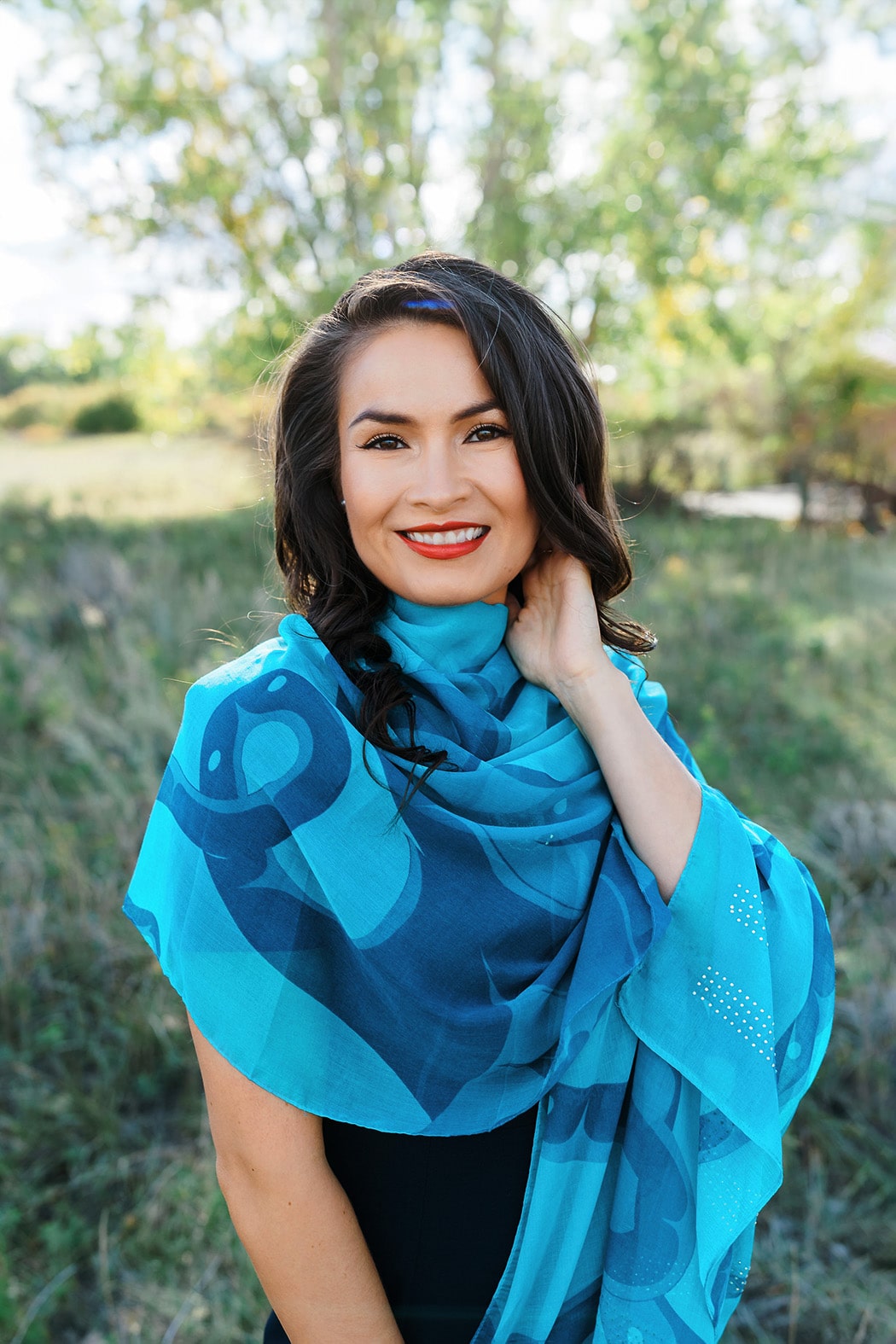
Apooyak'ii / Dr. Tiffany Hind Bull-Prete
Convocation Speaker
Wednesday, June 19, 10 a.m.
Wednesday, June 19, 3 p.m.
Apooyak’ii/Dr. Tiffany Hind Bull-Prete is a member of the Kainai (Blood Tribe) of the Siksikasitapi (Blackfoot Confederacy), located in the Treaty 7 area. She is an assistant professor in the Department of Sociology at the University of Lethbridge. Her program of work consists of implementing the Truth and Reconciliation Commission’s Calls to Action on the Blood Reserve.
Dr. Hind Bull-Prete earned her bachelor of elementary education specializing in math and science, and completed her master of education and doctor of philosophy in education at the University of Alberta. She held both a Social Science and Humanities Research Council (SSHRC) Postdoctoral Fellowship, and was an inaugural recipient of the University of Calgary's Provost's postdoctoral award for Indigenous and Black scholars at the University of Calgary.
The University of Alberta awarded Dr. Hind Bull-Prete the Alumni Horizon Award (2022) which recognized her research initiatives arising from her Truth and Reconciliation research, and its community implications as an outstanding professional achievement. The award acknowledged that, “Those who hear her speak never forget it — she tackles difficult subjects with eloquence and humanity. Tiffany is a difference-maker”.
Dr. Hind Bull-Prete recently curated the exhibition Stolen Kainai Children: Stories of Survival. This exhibit portrays the experiences of Kainai children during the residential school era, shedding light on the educational policies of that time and the remarkable resilience of the Blood Tribe.
Dr. Hind Bull-Prete’s background is in educational policy studies, specializing in Indigenous Peoples education. Her area of expertise includes: Indigenous secondary retention rates within the public school system, Blackfoot historical research, impacts of colonization, intergenerational trauma and Indigenous research methodologies.
In her spare time, Dr. Hind Bull-Prete is a Native American beadwork enthusiast. She published a research paradigm grounded in an Indigenous worldview that is guided by Native American beadwork.

Installation of the Chancellor
Nizar J. Somji
Convocation Speaker
Friday, June 21, 3 p.m.
Nizar J. Somji, an accomplished engineer and entrepreneur committed to innovation, has been elected as the University of Alberta’s 23rd chancellor. Elected by the University Senate, he succeeds Peggy Garritty and commences a four-year, non-renewable term upon his installation.
With over 30 years of leadership experience developing initiatives, fostering strategic partnerships and driving innovation, Somji is the founder of multiple successful businesses. These include the Jaffer Group of Companies, which has invested more than $130 million in Alberta through ventures in construction, staffing, information technology, realty, hospitality, petroleum and property management.
A U of A graduate with a master's degree in chemical engineering, Nizar's dedication to advancing industrial innovation is evident through his funding of two engineering research chairs at the university. His contributions have led to significant developments in process control and automation, which multinational corporations have adopted.
His expertise as a seasoned corporate executive also extends to the community. He is a current member of EPCOR’s board of directors and chair of KV Capital, a Western Canadian equity fund enterprise. Somji has also served on the boards of Redline Communications and Critical Control Energy Services Corp. He has also served with the U of A board of governors and as a volunteer global director of campus development and operations with Aga Khan University and Hospital.